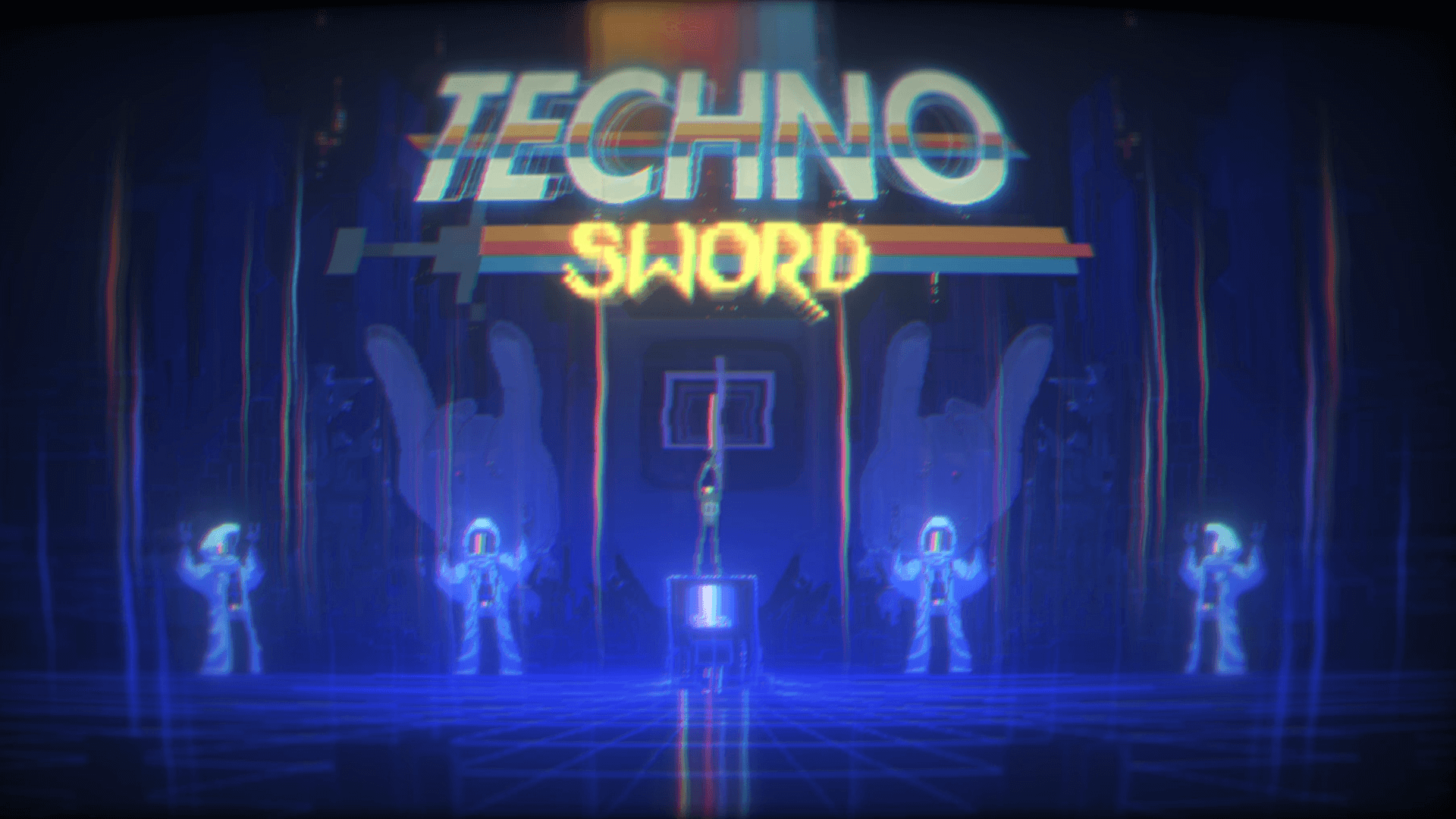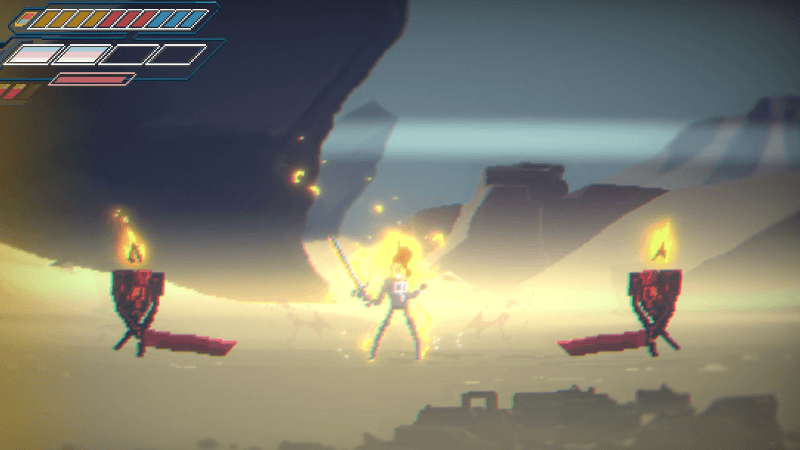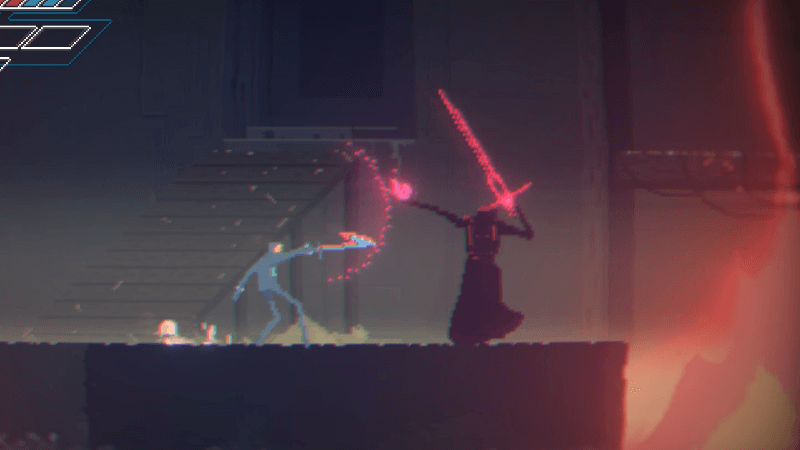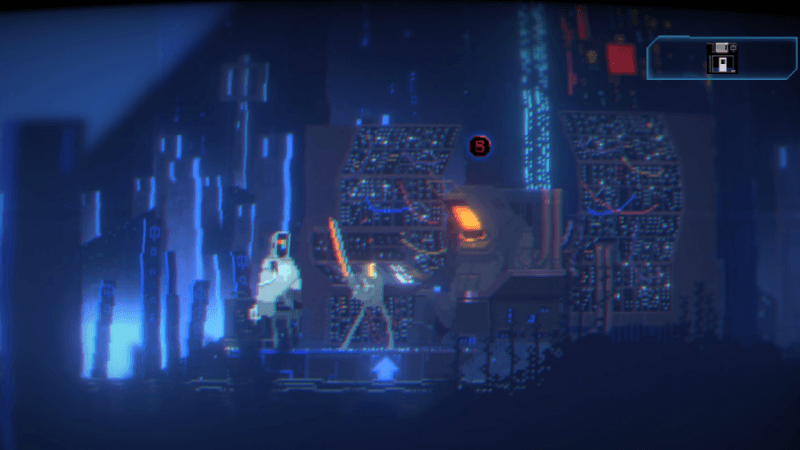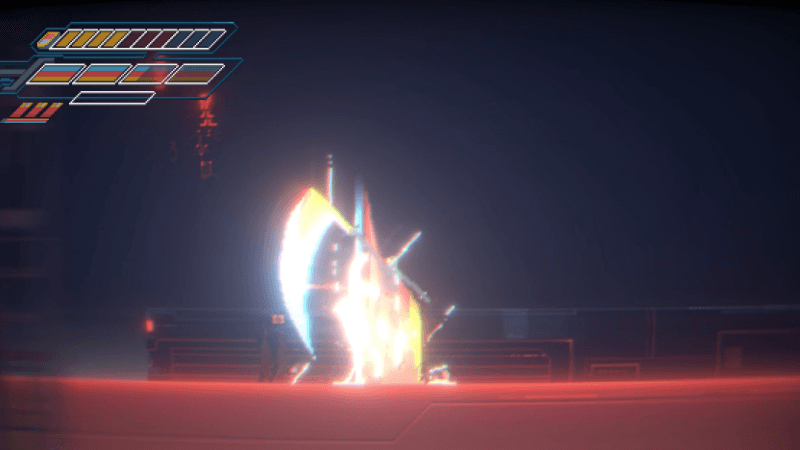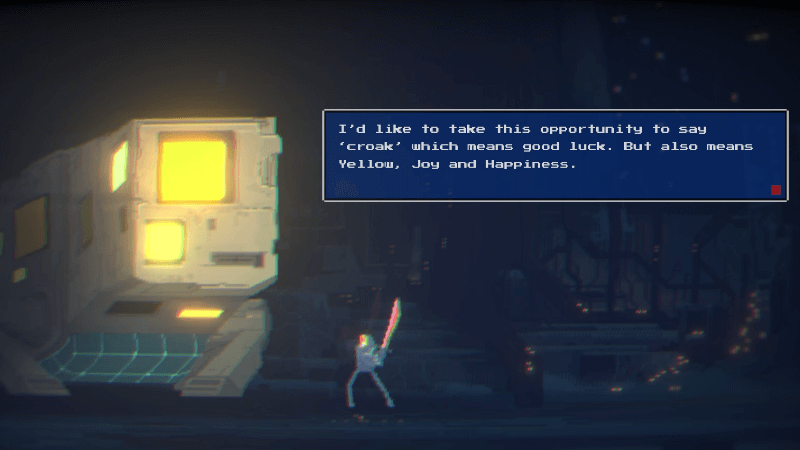Fast Links
Dive into the nostalgic past to kick some cyber-brass on a trippy pixel-art adventure across the dimensional planes of the Digital Kingdom. The fellow nerds at Studio Koba have triumphantly delivered the Tron video game we never got. A retro action-packed 2D platformer, Narita Boy is the ultimate homage to 80s techno-culture. Prepare to battle VHS hammer-wielding demon lords, surf on a floppy disk, and jam to a phenomenal ‘synthy’ soundtrack. Narita Boy is available on PC, Xbox, PS4, and the Nintendo Switch.
Saving the World
The Motherboard has activated the Narita Boy protocol. The dark overlord HIM and his Stallion army have brought imbalance to the digital landscape and erased the Creator’s memories. As a result, the rogue sentient programs are attempting to escape cyberspace to wreak havoc in the human world. Wielding your tricolor Technosword, you play as Narita Boy, the chosen hero to save the Digital Kingdom. It is up to you to recover the Creator’s memories and stop the cyber fiend from taking over the world. The three colors, yellow, red, and blue, form the Trichroma, the mystical energy that emanates from the Core of the Digital Kingdom. Empowered by this supernatural force, Narita Boy must travel across various domains to put an end to HIM’s evil reign. The in-game plot is heavy with lore, telling two interwoven storylines parallel to each other. While one half is chock full of all manner of geekspeak and techno-babble, the other describes a melancholic tale of pain, loss, and renewal.
While having obvious “Tron” vibes written all over it, Narita Boy‘s story combines a unique flavor of Japanese art and spirituality into its mix. The bewitching aesthetics and atmosphere ripple with a Shinto-based influence while still firmly established on a wireframe feel. The world’s presentation stays true to its throwback, all the while telling a compelling narrative that will keep you interested until the end.
Modernized Retro Combat
Unlike Shovel Knight or Katana Zero, Narita Boy doesn’t seek to recreate a retro experience with its gameplay. Rather, it revolutionizes the styles of the past while being a modern game at its core. Your main weapon is the Technosword, a blade that also functions as a shotgun and laser beam. As you battle your way through the Digital Kingdom, you’ll constantly unlock new abilities and powerups to fuel your combat. Narita Boy does an excellent job scaling player power with enemy complexity. For example, shortly after unlocking a bash ability, a new enemy with a shield will appear. Making immediate use of your new bash attack, you’ll quickly learn how to take on these new foes. As you progress, the game will continually reinforce the player to use their skills to take on different opponents. Bosses and enemy types become more interesting and challenging to battle. Bear in mind, Narita Boy features only one difficulty. While it may not be as difficult as Hollow Knight, there’s no shortage of tense gameplay moments.
“Non-Metroidvanian” Puzzle Platforming
Narita Boy is not an exploratory Metroidvania. In the time you’re not fighting or reading text, the game will have you jumping and climbing about using your newly learned abilities to traverse the terrain. Because of the linear nature of Narita Boy, there is no map. This means you’ll have to actively remember certain areas and important clues needed to progress. Luckily, every location’s name is always on display at the bottom of your screen. One potential criticism some may have is that the game still requires you to backtrack, making long treks back and forth, slowing down the gameplay’s dynamic nature.
On the flip side, Narita Boy is full of moments where you either earn a new power-up or get into a combat sequence that will give you a “Things are about to go down” feeling. Epic boss battles, mega-morphing, or powerful summons — Narita Boy‘s gameplay constantly provides excitement to keep you on your toes.
The “Kickin’ Soundtrack” and Flashy Visuals
Narita Boy‘s audio and gameplay masterfully combine to create one of the best power fantasy experiences in a modern retro game. A major highlight of Narita Boy has to be its exceptional soundtrack. The musical score goes way beyond just a 16-bit track. With a blazing mix of synthetic beats and Daftpunk inspired electro-pop, the audio is unquestionably sublime. The exhilarating soundtrack ‘kicks,’ and when it does, it ‘kicks’ hard. A lot of the time, the soundtrack is what drives the combat, funneling an empowering and heroic energy into the gameplay. Lovers of the 80s style of music will undoubtedly adore Narita Boy‘s tunes.
Narita Boy offers stunningly excellent visuals in its pixel art and presentation. The striking pixel animations, handcrafted assets, and epic backdrops add an extraordinary level of visual splendor. The screen’s CRT motif feeds into the player’s nostalgia. You’ll find disused retro technology subtly spread throughout the world of the Digital Kingdom, creating an almost tangible mood of spiritual iconography the digital denizens hold. It’s almost like the game’s designers went shopping down the aisle of a retro nerds’ childhood.
Potential Drawbacks
Unfortunately, there are areas where Narita Boy doesn’t deliver the best experience, particularly in its graphics. Visual clarity poses a possible problem with the color palette of enemies blending into the background in specific areas. Additionally, sometimes the environment will block the player’s vision of an enemy’s movement or actions on screen, causing frustration.
The biggest issue some players may face is the endless psychedelic flashing in almost every section of the game. Understandably, Narita Boy is trying to shoot for the overly “colorful and flashy” vibes of the 80s culture. However, those who suffer from sensitive eyesight will find difficulty in enjoying the game.
Conclusion
With its sublime soundtracks, stunning visuals, and fluid combat, Narita Boy is an experience retro lovers should not miss out on. Electro-pop and 80s synthwave fans, your ears will be blessed by this game. The platforming and exploration are serviceable, but the game’s “creepypasta” style plot and narrative are where it shines. The only shortcoming would be its blinding visual flashes. It won’t bother everyone but may become a discomfort to a select few.
Narita Boy is truly revolutionary in its presentation of simulating the retro era of gaming. If Studio Koba’s debut title is this good, I can only imagine what’s in store for them in the future.
[review]

